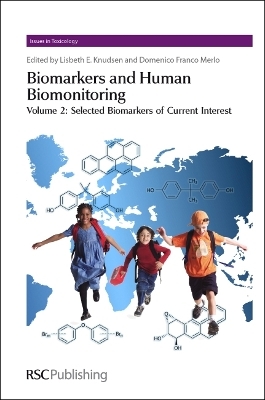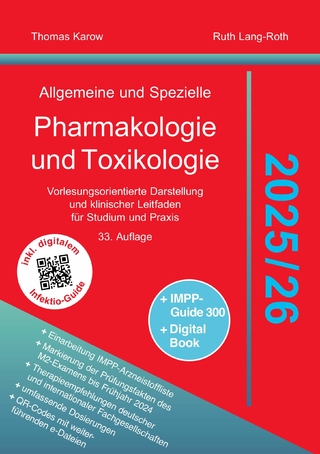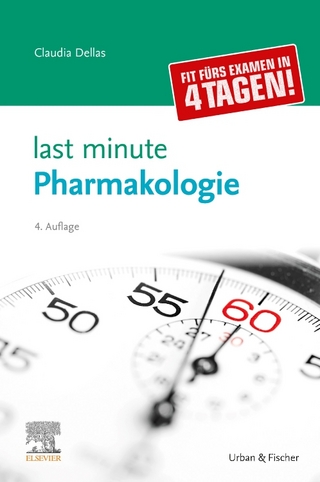
Biomarkers and Human Biomonitoring
Royal Society of Chemistry (Verlag)
978-1-84973-242-0 (ISBN)
Human biomonitoring has developed from a research tool in occupational and environmental health to identify and quantify exposures to harmful substances in urine and blood. The analytical methods for detection of substances in biological media have considerably improved with smaller detection limits and more precise and specific measurements. Human biomonitoring is a valuable tool in exposure estimation of selected populations and currently used in surveillance programs all over the world. This two volume set provides an overview of current available biomarkers and human biomonitoring programs in environmental health, which is timely given the present debate on adverse health effects from environmental exposures. The books decribe both previous and ongoing studies as well as the newer biomarkers of exposure and effects. Volume one describes current human biomonitoring programs in Germany, Romania, France, Canada, India and Belgium, providing convincing evidence of a global decline in human exposures to lead and increasing concern from exposure to endocrine disruptors and the genotoxic compound. Biomarkers of specific exposures to a wide range of widely used everyday compounds such as phthalates, PFCs, bisphenol A, brominated flame retardants, PAHs, dioxins, mercury and arsenic are also discussed. Volume two decribes human biomonitoing of exposures to environmental tobacco smoke, mycotoxins, physiological stress, hormone activity, oxidative stress and ionizing radiation, as well as effect biomarkers of hemoglobin adducts, germ cells, micronuclei and individual susceptability. The books will be essential reading for toxicologists, environmental scientists and all those working in the safety and risk assessment of chemicals.
Lisbeth Knudsen received an MSc in Biochemistry in 1980 and PhD in Biomedicine 1993. Her present position is professor of experimental toxicology at the Department of Occupational and Environmental Health, The Institute of Public Health, University of Copenhagen. She was until 2009 a national member of the Scientific Advisory Committee (ESAC) for the European Centre for the validation of Alternative Methods (ECVAM) and is currently an active member of the EU Implementation Group on Biomonitoring. At the national level Lisbeth has coordinated several major biomonitoring studies within occupational health. She is the current Coordinator of the European Network on Children's Susceptibility and Exposure to Environmental Genotoxicants. She is an active participant in a number of EU-projects: COPHES (Consortium to Perform Human Biomonitoring on a European Scale), DEMOCOPHES (Demonstration of a Study to Coordinate and Perform Human Biomonitoring on a European Scale) and LIFE+ 09 ENV/BE00410. Lisbeth is also an active member of the Research Council of the Faculty of Health Sciences at the University of Copenhagen and the Danish Consensus Platform for 3R Alternatives to Animal Experimentation (DACOPA). In 2006 Lisbeth received the Nordic Alternative Price for promoting the development of alternatives to animal testing and she is the current coordinator of the Danish in vitro toxicology network and treasurer in the European Consensus Platform for 3R Alternatives to Animal Experimentation (ECOPA). Professor Domenico Franco Merlo received his Ph.D. in Environmental Health, Epidemiology from the University of Cincinnati, Ohio, USA in 1988. He is currently Director of the Unit of Epidemiology, Biostatistics and Clinical Trials, Department of Cancer Epidemiology and Prevention of the National Cancer Institute of Genoa, Italy. He coordinated and contributed to European and national studies on cancer risk associated with environmental and occupational exposure to crystalline silica, benzene, 2,3,7,8-TCDD, pesticides as well as studies including biomarkers of exposure, early biological effects, and individual susceptibility.
Introduction;
examples of ongoing studies and surveys in Germany, Romania, France, Canada, India and Holland;
biomarkers of exposure: phthalates, PFCs, bisphenol A, brominated flame retardants, lead, PAHs, dioxins, mercury and arsenic;
biomarkers of exposure: hemoglobin adducts, environmental tobacco smoke, mycotoxins, the psychosocial working environment, micronuclei, individual susceptability, hormone functions, oxidative stress, germ cells and ionizing radiation.
| Reihe/Serie | Issues in Toxicology ; Volume 10 |
|---|---|
| Verlagsort | Cambridge |
| Sprache | englisch |
| Maße | 156 x 234 mm |
| Gewicht | 1259 g |
| Themenwelt | Medizin / Pharmazie ► Medizinische Fachgebiete ► Arbeits- / Sozial- / Umweltmedizin |
| Medizin / Pharmazie ► Physiotherapie / Ergotherapie ► Orthopädie | |
| Studium ► 2. Studienabschnitt (Klinik) ► Pharmakologie / Toxikologie | |
| Naturwissenschaften ► Biologie ► Biochemie | |
| Technik ► Medizintechnik | |
| Technik ► Umwelttechnik / Biotechnologie | |
| ISBN-10 | 1-84973-242-6 / 1849732426 |
| ISBN-13 | 978-1-84973-242-0 / 9781849732420 |
| Zustand | Neuware |
| Informationen gemäß Produktsicherheitsverordnung (GPSR) | |
| Haben Sie eine Frage zum Produkt? |
aus dem Bereich


